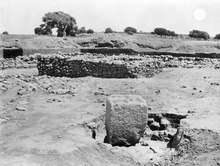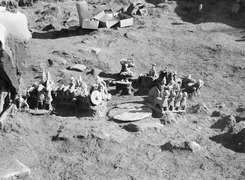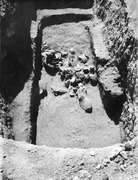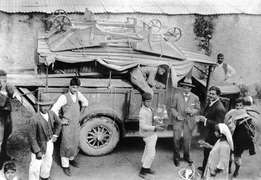Swedish Cyprus Expedition

The Swedish Cyprus Expedition was a project to systematically investigate the archaeology of the early history of Cyprus. It took place between September 1927 and March 1931 and was led by three archaeologists: Einar Gjerstad, Erik Sjöqvist and Alfred Westholm together with architect John Lindros.[1]
Archaeological excavations were made at various locations in Cyprus including Lapithos, Nitovikla, Ajia Irini and Enkomi. The results were published in four volumes from 1934 to 1972. Most of the finds are now kept at the Cyprus Museum in Nicosia and Medelhavsmuseet.[2]
In total, 30 sites and 375 graves were excavated. The Expedition's Cypriotic driver and assistant, Tooulis Souidos, followed the expedition to Sweden where he continued to work with the Cyprus collections.[3]
- Pictures by John Lindros from The Swedish Cyprus Expedition




References
- ↑ Hägg Robin, 'Swedish Cyprus Expedition' in An Encyclopedia of the History of Classical Archaeology (Nancy de Grummond ed.).
- ↑ Hägg Robin, 'Swedish Cyprus Expedition' in An Encyclopedia of the History of Classical Archaeology (Nancy de Grummond ed.).
- ↑ "A personal look inside the Swedish Cyprus Expedition". Retrieved 2017-09-05.
Sources
Fischer, P.M. The New Swedish Cyprus Expedition 2010. Excavations at Dromolaxia Vizatzia/Hala Sultan Tekke. Preliminary results. With appendices by P. Klingborg, F. and F. Kärfve, C. Hagberg, O. Svensson, S. Macheridis and L. Franz. OpAthRom (Opuscula) 4, 2011, 69-89. Fischer, P.M. The New Swedish Cyprus Expedition 2011: Excavations at Dromolaxia Vizatzia / Hala Sultan Tekke. Preliminary results. OpAthRom (Opuscula) 5, 2012.
See also